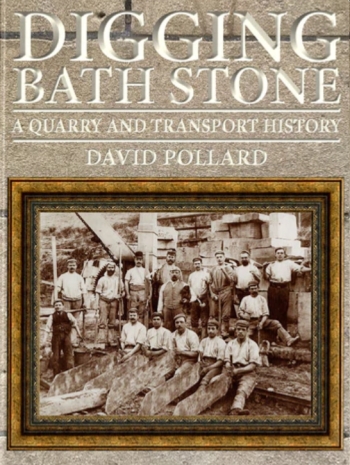File:Digging bath stone 350.jpg
Digging Bath Stone: a quarry and transport history, David Pollard, Lightmoor Press, 512 pages, 570 black-and-white illustrations, hardback. Source: A life with stone in Context 170, published by the Institute of Historic Building Conservation (IHBC) in December 2021, written by Chris Wood, now retired from Historic England, where he led the building conservation and research team. https://ihbconline.co.uk/cont_arch/?p=1213
File history
Click on a date/time to view the file as it appeared at that time.
| Date/Time | Thumbnail | Dimensions | User | Comment | |
|---|---|---|---|---|---|
| current | 06:57, 1 May 2022 |  | 350 × 465 (167 KB) | Designing Buildings (Talk | contribs) | (Digging Bath Stone: a quarry and transport history, David Pollard, Lightmoor Press, 512 pages, 570 black-and-white illustrations, hardback. Source: ‘A life with stone’ in Context 170, published by the Institute of Historic Building Conservation (IHBC)) |
- Edit this file using an external application (See the setup instructions for more information)
File usage
The following page links to this file:
About the wiki
Anyone is welcome to use and contribute to the wiki in different ways.
[edit] Engaging with the wiki
You can:
- Contribute to existing articles
- Create articles
- Share articles through social media and other channels
- Contact the CIRCuIT project to let us know what you think and how we can improve
[edit] Add your own content
To contribute to or create an article, you can follow these steps:
- Register as a user
- Read through the editorial policy and guidance on writing and contributing to articles
- See the detailed help page on tips on writing wiki articles
- Try editing a test article
- If editing an article, select 'Edit this article' underneath the article title
- If creating a new article, select 'Create an article'. In the 'Select categories' area, expand the 'Industry context' list and tag 'Circular economy' to add your article to this wiki
[edit] Who is this wiki for?
The articles contain information on implementing circular economy approaches in construction that could be relevant to:
- Architects
- Construction contractors
- Designers
- Developers, owners, investors
- Engineers
- Landowners
- Manufacturers and supplier
- Universities and research
- Urban planners
[edit] About CIRCuIT
The Circular Economy wiki is supported by the Circular Construction in Regenerative Cities (CIRCuIT) project, which is funded by the European Union's Horizon 2020 research and innovation programme. CIRCuIT is a collaborative project involving 31 ambitious partners across the entire built environment chain in Copenhagen, Hamburg, Helsinki Region and Greater London. Through a series of demonstrations, case studies, events and dissemination activities, the project will showcase how circular construction practices can be scaled and replicated across Europe to enable sustainable building in cities and the transition to a circular economy on a wider scale.







